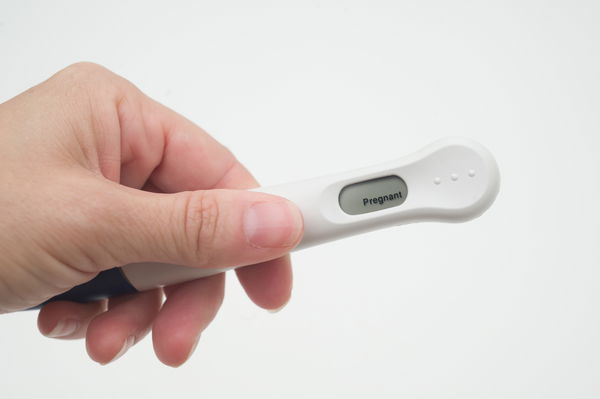Highlights
A few months ago, I was surprised when I received a call from my mom with the news that she had gotten married. “Married?” I asked. She went on to explain, “Yes, we stood before each other under a beautiful oak tree on a plantation in South Louisiana and made a commitment to live together until we die. For better, or for worse.” There were no clergy, no judge, no church, no wedding party, no marriage license, no flowers, and no engagement. It was just my mom in her tie-dye hippy shirt, her future “husband,” and God.
My mom, like so many other divorced Baby Boomers, was hit hard during the recession and found herself in poverty in her late fifties having lost her home and struggling to make ends meet. Then she met the man she loved, a man who swept her off her feet. Yet she wanted to protect what little she had rather than be penalized in her aging years. So instead of walking down the aisle to form a legal union, she decided to cohabit. I honestly did not know what to say but “congratulations, mom.” At her age and income level, taxation or even the slightest financial penalties could affect her and her partner in major ways.
My mom’s story is not unique—far from it. Baby Boomers are cohabiting at a high and increasing rate. In 2000, when the oldest Baby Boomers were in their early fifties, there were 1.2 million cohabiting Americans over age 50; in 2013, by comparison, there were 3.3 million. For older Americans who are divorced and want to find love for a second (or a third) time—marriage is not in the cards, it seems. Unlike Millennials, many of whom cohabit to test the waters with a partner before making a long-term commitment, Boomers may cohabit rather than marry for more complicated reasons.
Financial concerns are central to many Boomers’ reluctance to marry. Boomers are afraid that marriage will burden them with higher healthcare premiums, drain their retirement benefits, lower their Social Security payout, raise their taxes, take away their survivor benefits, disrupt their estate plans, or threaten what assets they wish to pass on to the next generation. Cohabitation is particularly attractive to the divorced aging woman who has a difficult time making ends meet on a single income, but who fears remarriage will threaten her benefits. (According to the Social Security Administration, the poverty rate is two-thirds higher among elderly women than elderly men.)
Financial concerns are central to many Boomers’ reluctance to marry.
Susan Brown and Matthew Wright, scholars at the National Center for Family and Marriage Research at Bowling Green State University, note another factor: “Cohabitation seems to allow Baby Boomers the freedom to maintain autonomy.” In addition to preserving individuals’ financial independence, it “does not appear to carry the same expectations for caregiving as marriage, a salient issue at this stage of the life course, particularly for women.”
In short, cohabitation “appears” to offer the same primary benefit as marriage—an intimate, co-resident partnership—without the legal ramifications and commitments that marriage entails. So it is easy for the aging adult on a fixed income to conclude that cohabitation is the only option—especially if they are misguided on the facts. For Boomers who have walked in similar shoes as my mom, marriage is the best alternative. My mom and her partner were ill advised on some facts that led them away from pursuing a legal marriage. They do not have much financial assets or debt; neither is receiving survivor’s benefits from a previous spouse, and neither is able to leave much for the next generation by means of inheritance, eliminating many of the financial arguments against marriage. So, what is holding them back?
If indeed it is love that is the “glue” that holds them together, then they should seek to enter into a union stronger than a simple cohabitation agreement. As a daughter who lives across the country from her aging mother, I want to see her taken care of not just financially but also physically. I want to see her cared for even after her partner dies. Women live longer and are more likely to suffer poverty than elderly men. This means that if a woman chooses to cohabit with a partner until he dies, she could be left with nothing from him except a long-term business transaction that becomes void at his death. Women should see this as a huge disadvantage of choosing cohabitation over a covenantal marriage. A marriage covenant is for better or worse, in sickness and in health, for richer or poorer and forsaking all others. Marriage is my hope and my prayer for not just my mom but for others walking in her shoes.
Love thinks and acts long-term, not just focusing on the pleasures of the moment. Authentic love leaves the person in a relationship better off than they would have been without them. I believe this is the type of love that Baby Boomers really want and if genuinely informed, that they will pursue. Talking with my mom and her “husband” about the fallacies that surround marriage and perceived penalties opened their eyes to this. The conversation ended with both of them saying, “Maybe we should marry?”
There are millions of Boomers who are facing the same tough choices as my mom. What can we do to reform policies that penalize aging adults if they do decide to remarry? How can we educate those who are misinformed?
Jennifer Murff is the president of Millennials for Marriage. She is also a candidate for the Doctorate of Strategic Leadership with an emphasis on strategic foresight focusing on Millennials and the future of marriage at Regent University’s School of Business and Leadership.













